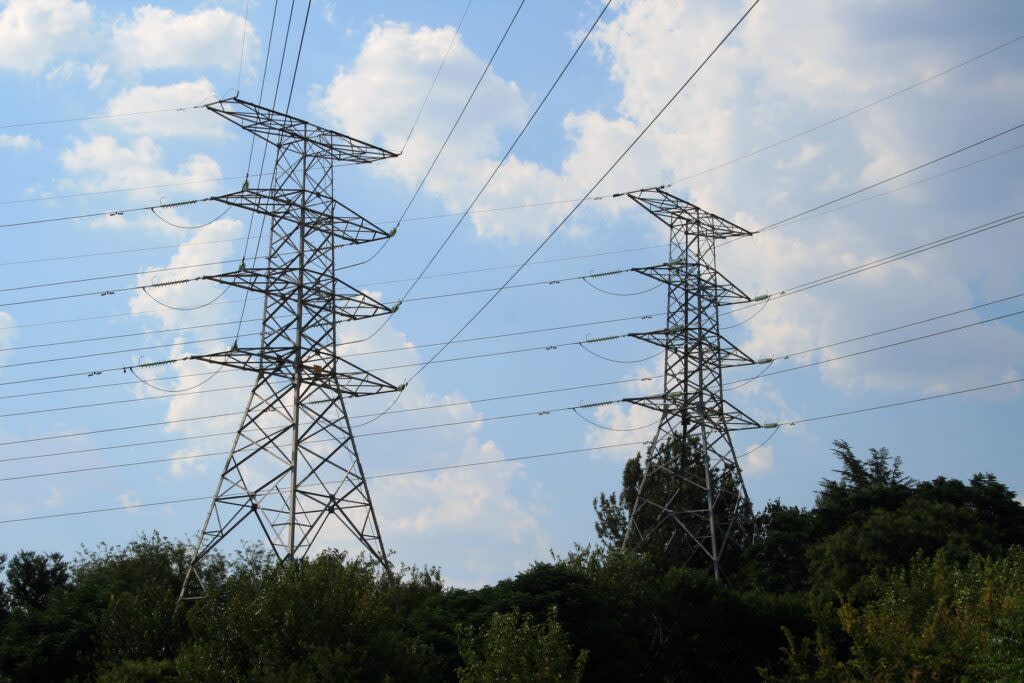The new gold rush: powering Indiana’s data center boom

A Bloomington manufacturing company claims that Duke Energy Indiana improperly used easement rights to encroach on private land. (Getty Images)
As the digital age accelerates, Indiana finds itself at the focal point of a new kind of gold rush—a rush to locate and power data centers and microchip manufacturing plants. These modern-day mines don’t extract ore; they process and store the lifeblood of the 21st century: data and microchips. And just like the gold rushes of old, this boom is reshaping the landscape, both literally and economically.
The AI revolution, grown out of advancements in machine learning and data processing, has triggered a surge in demand for data centers. Amazon recently announced it would invest $150 billion in new data centers over the next 15 years. Indiana, with its ample space, central location, and business-friendly policies, has emerged as a prime spot for these technological hubs. But this rapid growth brings an insatiable hunger for one critical resource: electricity.
Data centers are notorious for their energy consumption. They require vast amounts of electricity to keep servers running and maintain the controlled environments necessary to protect delicate equipment from overheating. Indiana’s data center industry is growing rapidly, but this expansion is causing an increase in power demand with the already limited generation our state produces. Experts warn that Indiana is phasing out fossil fuels too quickly to keep up with the increasing demand for energy from both the commercial and consumer sectors.
Finding balance
This presents a conundrum for the Hoosier State. The economic benefits of hosting data centers are clear: job creation, investment in local communities, and bolstering the state’s reputation as a tech-friendly haven. However, Indiana’s most abundant and reliable power source to power these projects faces unprecedented early retirements. With 12 coal units slated for closure by 2028, Indiana leads the nation in projected retirements of its baseload power, dependable and dispatchable coal. Early retirements will exacerbate the rising electric rates as many of the proposed retirements have not yet been fully paid for by ratepayers. Coal-fired generation can bridge the gap of what intermittent energy sources like solar and wind cannot provide when weather conditions do not cooperate.
This retreat from Indiana’s dependable, clean coal has escalated electricity costs and pushed Indiana into a precarious position of regularly purchasing energy at volatile market prices. Indiana has slipped from boasting the 5th lowest cost of electricity to a middling 32nd nationally. The repercussions of this descent are felt most acutely by our residents, who now face soaring utility rates. Just this year, Duke Energy requested a 16% increase in customers’ electric rates, CenterPoint Energy requested a 16.5% increase, and AES requested 14%.
This puts Indiana at a crossroads. The state must strike a balance between promoting technological advancement and maintaining reliable and affordable energy practices. This is not just a matter of preference but a critical need to secure our economic future and the well-being of our residents. Without our state’s baseload power source, clean coal, we risk losing potential economic opportunities while continuing the trend of soaring consumer electric rates and possible power outages.
In this modern-day gold rush, Indiana’s economic aspirations hinge on a stable and affordable power supply. High-demand industries like microchip manufacturing and data centers require an unprecedented energy reserve. To secure such industries and the high-wage jobs they bring, Indiana must consider a moratorium on fossil fuel fleet retirements until an adequate supply of dispatchable baseload power is established to ensure affordable and reliable electricity for Hoosier consumers along with current and future economic projects.
GET THE MORNING HEADLINES DELIVERED TO YOUR INBOX
The post The new gold rush: powering Indiana’s data center boom appeared first on Indiana Capital Chronicle.

